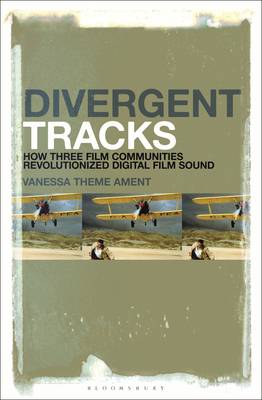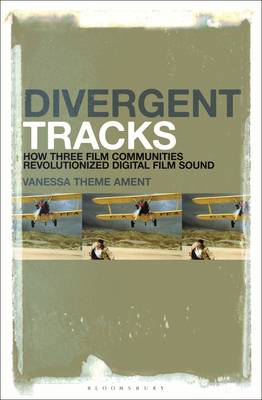
Je cadeautjes zeker op tijd in huis hebben voor de feestdagen? Kom langs in onze winkels en vind het perfecte geschenk!
- Afhalen na 1 uur in een winkel met voorraad
- Gratis thuislevering in België vanaf € 30
- Ruim aanbod met 7 miljoen producten
Je cadeautjes zeker op tijd in huis hebben voor de feestdagen? Kom langs in onze winkels en vind het perfecte geschenk!
- Afhalen na 1 uur in een winkel met voorraad
- Gratis thuislevering in België vanaf € 30
- Ruim aanbod met 7 miljoen producten
Zoeken
Divergent Tracks
How Three Film Communities Revolutionized Digital Film Sound
Vanessa Theme Ament
Paperback | Engels
€ 69,45
+ 138 punten
Omschrijving
By examining three case studies of award-winning soundtracks from cult films-Barton Fink(1991), Bram Stoker's Dracula (1992), and The English Patient (1996)-it becomes clear that major American film communities, when confronted with the initial technological changes of the 1990s, experienced similar challenges with the inelegant transition from analogue to digital. However, their cultural and structural labor differences governed different results.
Vanessa Ament, author of The Foley Grail (2009), rather than defining the 1990s as an era of technological determinism-a superficial reading-it is best understood as one in which sound professionals became more viable as artists, collaborated in sound design authorship, and influenced this digital transition to better accommodate their needs and desires in their work.
Vanessa Ament, author of The Foley Grail (2009), rather than defining the 1990s as an era of technological determinism-a superficial reading-it is best understood as one in which sound professionals became more viable as artists, collaborated in sound design authorship, and influenced this digital transition to better accommodate their needs and desires in their work.
Specificaties
Betrokkenen
- Auteur(s):
- Uitgeverij:
Inhoud
- Aantal bladzijden:
- 176
- Taal:
- Engels
Eigenschappen
- Productcode (EAN):
- 9781501378539
- Verschijningsdatum:
- 17/11/2022
- Uitvoering:
- Paperback
- Formaat:
- Trade paperback (VS)
- Afmetingen:
- 152 mm x 229 mm
- Gewicht:
- 263 g

Alleen bij Standaard Boekhandel
+ 138 punten op je klantenkaart van Standaard Boekhandel
Beoordelingen
We publiceren alleen reviews die voldoen aan de voorwaarden voor reviews. Bekijk onze voorwaarden voor reviews.









